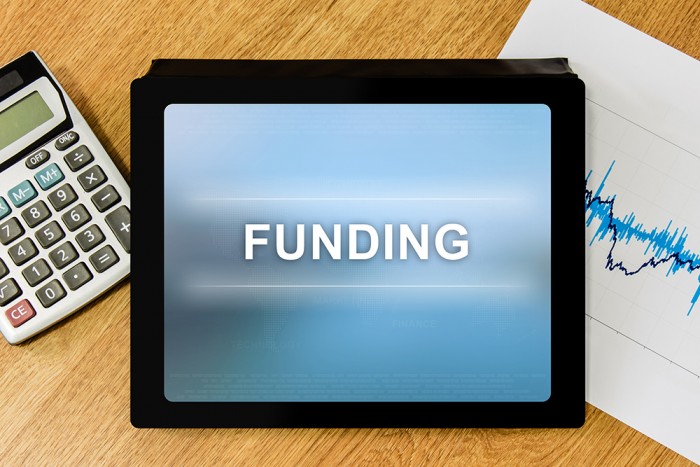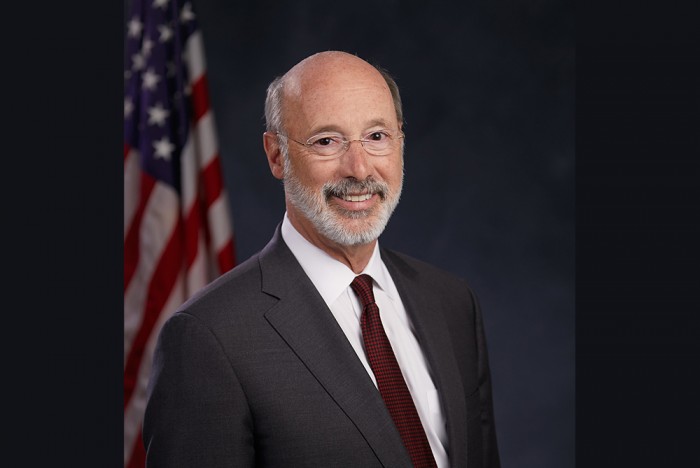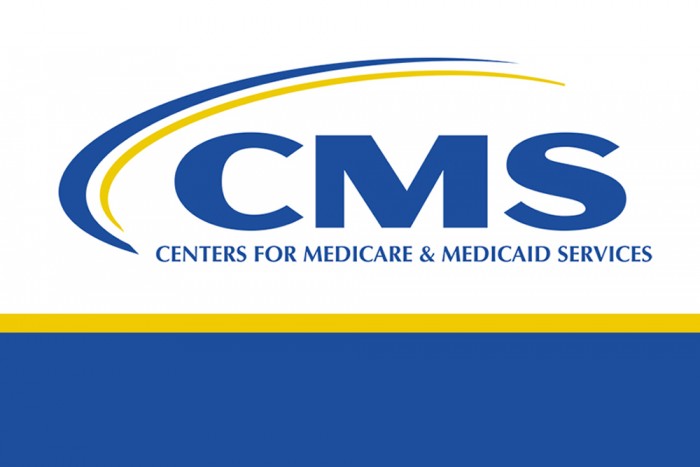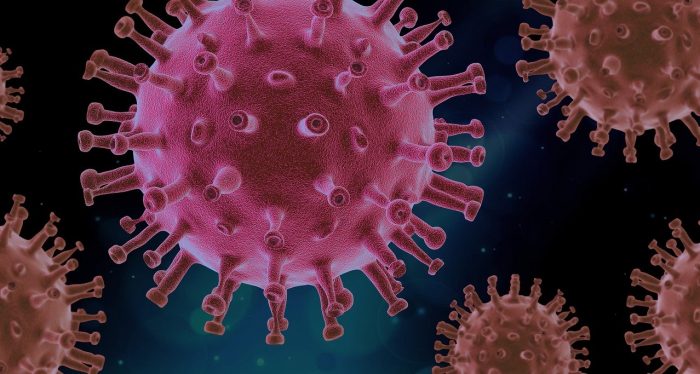Governor Wolf 2021 Agenda Prioritizes Economic Recovery, Building on Bipartisan Measures, Government Reform
HHS Announces Intention to Extend PHE Declaration Through 2021
In a letter to United States governors, Acting Secretary of the Department of Health and Human Services (HHS) Norris Cochran announced their intention to keep the public health emergency (PHE) declaration throughout 2021. States will be provided with a 60-day notice before the declaration is terminated or expires to allow stakeholders time to transition. Additionally, HHS has indicated renewals will be announced every 90 days.
Wolf Administration Provides COVID-19 Vaccine Update, Focuses on Getting More Doses to Pennsylvanians Amid Limited Federal Supply
Abuse & Molestation Prevention – Wednesday, Feb 24, 2021
CMS 2021 Call for Quality Measures Webinar
The Centers for Medicare and Medicaid Services (CMS) will host a webinar to provide an overview of the 2021 Call for Quality Measures timeline and measures evaluation process for the Merit-Based Incentive Payment System (MIPS) measure development, submission, and expectations that align with CMS priorities. This webinar is intended to assist with the development of measures for future MIPS performance periods.
The webinar will provide an overview of the development, criteria, and evaluation of MIPS measures. Among the topics to be presented during the webinar, CMS will provide information regarding:
- Overview of Call for Measures
- Requirements for Successful Submission
- Measure Evaluation Considerations
- Exploration of Specialty or Clinical Topic Gap Areas
Participants will have an opportunity to ask questions related to the presentation.
This webinar will be held on Thursday, January 28, 2021 from 3:00 pm to 4:30 pm Eastern Time (ET).
Long-Term Care and the Impact of COVID-19: A First Look at Comparative Cross-National Statistics
Second Draw Paycheck Protection Program Loans
Governor Wolf Nominates New Secretary of Health
HARRISBURG (January 22, 2021) — Governor Wolf announced today that he has nominated Alison Beam as the next Secretary of Health for the Commonwealth of Pennsylvania. Beam will succeed Dr. Rachel Levine, who was recently selected by President Biden as his Assistant Secretary of Health.
With many years of experience in the health care arena, one of Acting Secretary Beam’s first priorities will be executing the Department of Health COVID vaccination plan. Prior to her nomination as the Secretary of Health, Ms. Beam served as the Deputy Chief of Staff to Governor Tom Wolf.
RCPA President and CEO Richard S. Edley commented, “Acting Secretary Beam’s work with policy development, legislative initiatives, communications, and stakeholder engagement involving multiple state agencies will prove invaluable in helping Pennsylvania move forward to combat the current COVID crisis and all of its far-reaching implications for the health and human services community. As all PA citizens know, focus on and success in this area will be critical. RCPA extends our sincere congratulations and we are very optimistic as to what the future holds for this administration, and for the Commonwealth as a whole.”
Read the Governor’s official press release here.
About the Rehabilitation and Community Providers Association (RCPA):
With well over 350 members, the majority of who serve over 1 million Pennsylvanians annually, Rehabilitation and Community Providers Association (RCPA) is among the largest and most diverse state health and human services trade associations in the nation. RCPA provider members offer mental health, drug and alcohol, intellectual and developmental disabilities, children’s, brain injury, medical rehabilitation, and physical disabilities and aging services, through all settings and levels of care. Visit www.paproviders.org for more information.
# # #
The Current FY Should End on a Positive Note, but Things Could be a Bit More Difficult After That
By Chris Comisac, Bureau Chief, Capitolwire
Harrisburg (January 21) – It was a good news-bad news report delivered by the state Independent Fiscal Office on Thursday as the agency presented its Economic and Budget Outlook for Fiscal Years 2020 – 2021 to 2025 – 2026.
The relatively good news is that Pennsylvania managed to get through the COVID-19 recession without a major hit to the immediate state budget thanks in large part to a significant amount of federal stimulus dollars and a far quicker economic turnaround than most had expected.
“Based on our projections of revenues and expenditures for the current fiscal year, we are projecting an ending balance of $1.5 billion,” said Independent Fiscal Office (IFO) Director Matt Knittel during Thursday’s virtual briefing.
Noting that the $1.5 billion figure is substantially higher than the “zero” that had been on the general fund financial statement for the final fiscal year (FY) 2020 – 2021 balanced budget that was adopted in November, Knittel explained, “We have an increase of up to $1.5 billion largely due to the improved economic outlook [and] the stronger-than-expected revenue collections since that time.”
The bad news is that all of those one-time federal dollars (and other budget-balancing strategies), while helpful in the short term to buoy Pennsylvania residents and the state’s fiscal health, are still only one-time and will leave a sizable structural deficit to be addressed in the coming fiscal years – the IFO forecasts it to be $2.5 billion for the coming 2021 – 2022 fiscal year – barring any additional federal or state efforts that boost commonwealth revenues.
Even more concerning is the forecast by the IFO that most of the state’s job losses that have not already been recovered since the losses in the spring of 2020 are likely to take far longer to recover with some to never be recovered.
Pointing out that the housing and financial crisis of 2008 was a significant contraction of more than four percent with employment needing six years to revert to pre-recession level, the IFO explains that the COVID-19 recession produced an immediate contraction of 1.1 million jobs – or around 18 percent – so they are assuming payroll employment will also require six years to revert to the pre-recession level.
Not including self-employed individuals, Pennsylvania’s latest employment data – for November – shows 455,000 fewer people employed than a year ago. Knittel said that he expects that number to be a bit higher – due to some business closures during the holidays – when new December data is released in about a week.
Additionally, there’s been a contraction of the state’s labor force – those working or looking for work – of approximately 260,000 compared to a year earlier.
Pointing to the substantial increase in labor productivity nationally – up by 10.6 percent for the second quarter of 2020 and 4.6 percent for the third quarter when for all of 2019, productivity increased by 1.7 percent – Knittel suggested that that could mean that many lost jobs aren’t returning with those unrecovered jobs being in the retail trade, food service, accommodation, and personal services sectors.
“This [productivity] is much higher than we’ve seen in the past decade, which was usually running about one or two percent, and it’s a dramatic takeaway from the impact of the COVID-19 recession,” said Knittel. “We are seeing a dramatic increase in labor productivity, and this could occur for many reasons – employers might ask their employees to do more, or they might invest in labor-saving machinery and technology that requires less labor.
“But this improvement in labor productivity, which has not reversed, does suggest that a lot of the job loss now will not be made up, and part of that is due to the fact that employers and businesses are now more productive from the changes that they have implemented in response to the COVID-19 recession.”
Because of the impact on the state’s employment numbers, the expectation is that Pennsylvanians’ cash income will take a hit once current federal assistance and other programs end.
Calendar year (CY) 2020 saw wage income and business and capital income drop – by $5 billion and $8 billion respectively – due to the impact of COVID-19, but that was more than offset by roughly $59 billion in federal stimulus in various forms (along with a $6 billion improvement in retirement savings), which the IFO says produced the strongest cash income growth since CY1998 ($52 billion or 8.3 percent) and a 2.6 percent increase (adjusted for shifts and one-time transfers) in general fund revenues for the first six months of the current fiscal year.
However, looking ahead to CY2021, even though there will be some improvement in wage income due to improving employment figures, the IFO analysis projects that it won’t be nearly enough to offset the loss in federal assistance programs, and an overall drop of $5 billion, or 0.8 percent, in cash income will occur. Again, the IFO acknowledges that this assumes that there’s no additional federal stimulus though there are already talks of even more stimulus coming from the federal level.
With the potential for a contraction of cash income, Knittel said that “that feeds into our projections of general fund revenues where we have very modest growth” for the coming fiscal year. However, he noted that beyond 2021, the expectation is that cash income will return to a steadier state of growth, which he put at roughly four percent.
But, like many of the jobs that won’t be returning, some of Pennsylvania’s economic growth potential has been lost due to the COVID-19 recession.
Knittel said the IFO is forecasting a larger structural deficit, “and one of the main drivers for that is the fact that economic growth has downshifted.”
“It’s a permanent loss to a lower growth path, and that’s one of the main things that’s driving the larger structural deficit,” said Knittel.
The IFO projects a loss of $63 billion (or 7.1 percent of what the IFO had projected in 2019) in gross domestic product (GDP) for 2021, a loss of $58 billion (or 6.3 percent) in 2022, and a loss of $56 billion (or 5.8 percent) in 2023. That lower growth path impacts expected wages paid to Pennsylvanians to the tune of $11 billion to $12 billion annually, which Knittel explained translates into an annual loss of $350 million in personal income tax revenues and $150 million in sales and use tax revenue.
According to the IFO, even though the state will end the current fiscal year with nearly $1.5 billion in excess revenue, the structural deficit at the outset for fiscal year 2021 – 2022 is forecast to be $2.5 billion, growing to $2.6 billion in FY2022 – 2023 but then slowly declining to roughly $2 billion in FY2025 – 2026. To further illustrate the impact of COVID-19, along with the policies pursued to address it and balance the state budget, the IFO in 2019 had forecast that the structural deficit would be $959 million for FY2021 – 2022, $1.3 billion for FY2022 – 2023, and then gradually declining toward $1 billion in later years.
In addition to the economic challenges created by the COVID-19 recession, the IFO notes that quite a lot of the structural deficit projected for FY2021 – 2022 is due to one-time revenue sources used to balance the current FY2020 – 2021 state budget:
- Special fund transfers totaling $431 million;
- A $100 million transfer from the Budget Stabilization Fund (the Rainy Day Fund) authorized under Act 114 of 2020;
- A $200 million transfer from the Pennsylvania Professional Liability Joint Underwriting Association (JUA) to offset Department of Human Services (DHS) program costs, though, as with past efforts to transfer that funding, the latest attempt has been challenged in federal court, and it is uncertain whether these funds will be received during the current fiscal year;
- The use of $1.33 billion in federal CARES Act coronavirus relief funds (CRF) to offset general fund costs in FY 2020 – 2021 for the Department of Criminal Justice ($1.06 billion), the Pennsylvania State Police ($226 million), the Department of Human Services ($30 million), and the Department of Health ($14 million);
- Federal funds associated with the temporary increase of Federal Medical Assistance Percentage (FMAP) payments used to reimburse states for Medicaid program costs provide $2.07 billion in state support in FY2020 – 2021, but that increase is scheduled to expire following the termination of the national public health emergency declaration related to COVID-19;
- A short-term managed care payment shift by the state Department of Human Services of $480 million;
- A delay by the state Department of Human Services of county child welfare costs (approximately $75 million) until FY2021 – 2022; and
- A temporary reduction in agency contributions for retiree health care in FY2020 – 2021 that is not expected to continue in FY2021 – 2022.
Beyond FY2021 – 2022, lawmakers will have to account for a new transfer of $469 million of sales and use tax revenue from the general fund to the Public Transportation Trust Fund, but by FY2022 – 2023, the IFO forecasts that revenue growth will begin to exceed expenditure growth (which the IFO says will contract somewhat due in large part to an expected decline of the school-age population), helping to slowly shrink the structural deficit.
As always, the IFO notes their forecasts for outlying years “assume the absence of a recession, low interest rates, and moderate inflation and therefore, likely represent a scenario that leans optimistic.”

















